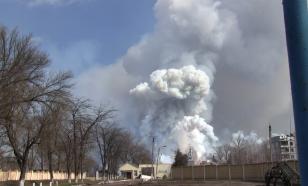Oil's share of world energy demand forecast to decline over next 25 years
Oil's share of world energy demand will decline over the next quarter century, the Energy Department said Tuesday, as high prices spur greater use of alternatives such as coal, natural gas and renewable fuels.

"High prices do matter," said Guy Caruso, administrator of the Energy Information Administration, a division of the Energy Department that released its annual international energy outlook.
The EIA predicted in December that worldwide oil prices would average $57 a barrel in 2030, a 35 percent increase from the long-term forecast the agency had made just a year earlier. As a result, the agency now expects oil's share of total world energy consumption to drop to 33 percent by 2030, down from 38 percent in 2003.
Over that same period, coal's share will rise to 27 percent, up from 24 percent; natural gas will make up 26 percent of consumption, up from 24 percent; renewable fuels like biodiesel and ethanol will rise to 9 percent of total world energy demand, up from 8 percent.
Still, world oil demand will rise to 118 million barrels a day by 2030, up from about 85 million barrels a day now, with more than half of the growth coming from the United States, China and India, according to the EIA's forecast, which assumes no major changes to existing energy policies and regulations.
The oil supply coming from countries outside of the Organization of Petroleum Exporting Countries is expected to rise by almost 24 million barrels per day by 2030. That is 62 percent more growth than is anticipated from OPEC.
"It's not so much the specific numbers. It's the trends we feel very confident in," Caruso explained.
Total world energy demand will rise by 71 percent to 722 quadrillion British thermal units by 2030, Caruso said, with the most robust growth coming from developing nations in Asia, the Middle East and Latin America. Energy-related emissions of carbon dioxide will rise by 75 percent, to 43.7 billion metric tons, at the same time that coal demand experiences the largest rate of increase. Growth in carbon dioxide emissions is expected to be most rapid in the developing nations of Asia, rising by 3.6 percent a year.
The rapidly growing demand for coal and natural gas is primarily being driven by growth in the power and industrial sectors, he said.
According to the EIA forecast, worldwide electricity demand will rise to 30,116 billion kilowatt-hours in 2030, more than double the 2003 level. Global coal and natural gas consumption will nearly double, too. By 2030, coal demand will rise to 10,561 million short tons, while natural-gas demand will climb to 182 trillion cubic feet, reports AP.
O.Ch.
Subscribe to Pravda.Ru Telegram channel, Facebook, RSS!


